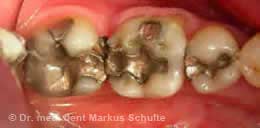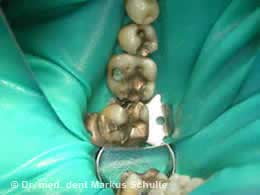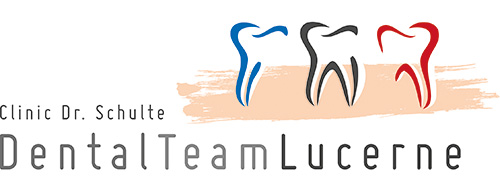Amalgam Removal
Amalgam replacement - What is amalgam?
For many years, there has been a debate about the filling material amalgam. Silver amalgam, as it is correctly called, consists of about 50% mercury, while the other half is made up of the heavy metals silver, copper, tin, and zinc.
Is amalgam really dangerous?

Amalgam filling
According to the current state of scientific discussion, there is evidence of potential dangers arising from the metallurgical composition of amalgam. However, the proof of harm is lacking to be able to remove amalgam from circulation. Therefore, it will likely remain in use for a long time to come: About 60% of the European population still have teeth filled with amalgam. Due to significant advances in modern tooth-colored composite filling materials, these plastic fillings are now as durable and stable as amalgam fillings. Therefore, there is really no reason to use amalgam. According to the old medical principle "Primum Nil Nocere" (First, do no harm), our practice is an "amalgam-free zone." Therefore, we are particularly focused on the correct removal of this material and on the suitable materials that can replace it.
How is amalgam removed?
The removal of old amalgam fillings is a critical moment that deserves special attention. Studies have shown that the patient's mercury exposure immediately after removing the amalgam increases significantly. This is due to the metal pulverised by the drill that remains in the patient's mouth and is swallowed. In addition, dangerous mercury vapours can form if the drill is not adequately cooled during the drilling process. For this reason, we routinely apply the following protective measure in our practice:

An impermeable sheet (rubber dam) is placed around the teeth to be treated before removing the amalgam. This hermetically isolates the work area from the oral cavity.
Alternatives to amalgam
After the gentle removal of amalgam, the question naturally arises as to which biologically harmless filling material can permanently replace it. Depending on the indication, we recommend:
> For front and side tooth fillings: composite fillings
> For large side tooth defects: inlays, onlays, or partial crowns made of ceramics
> For more detailed information on the treatment options described above, please see the section on Aesthetic Dentistry

